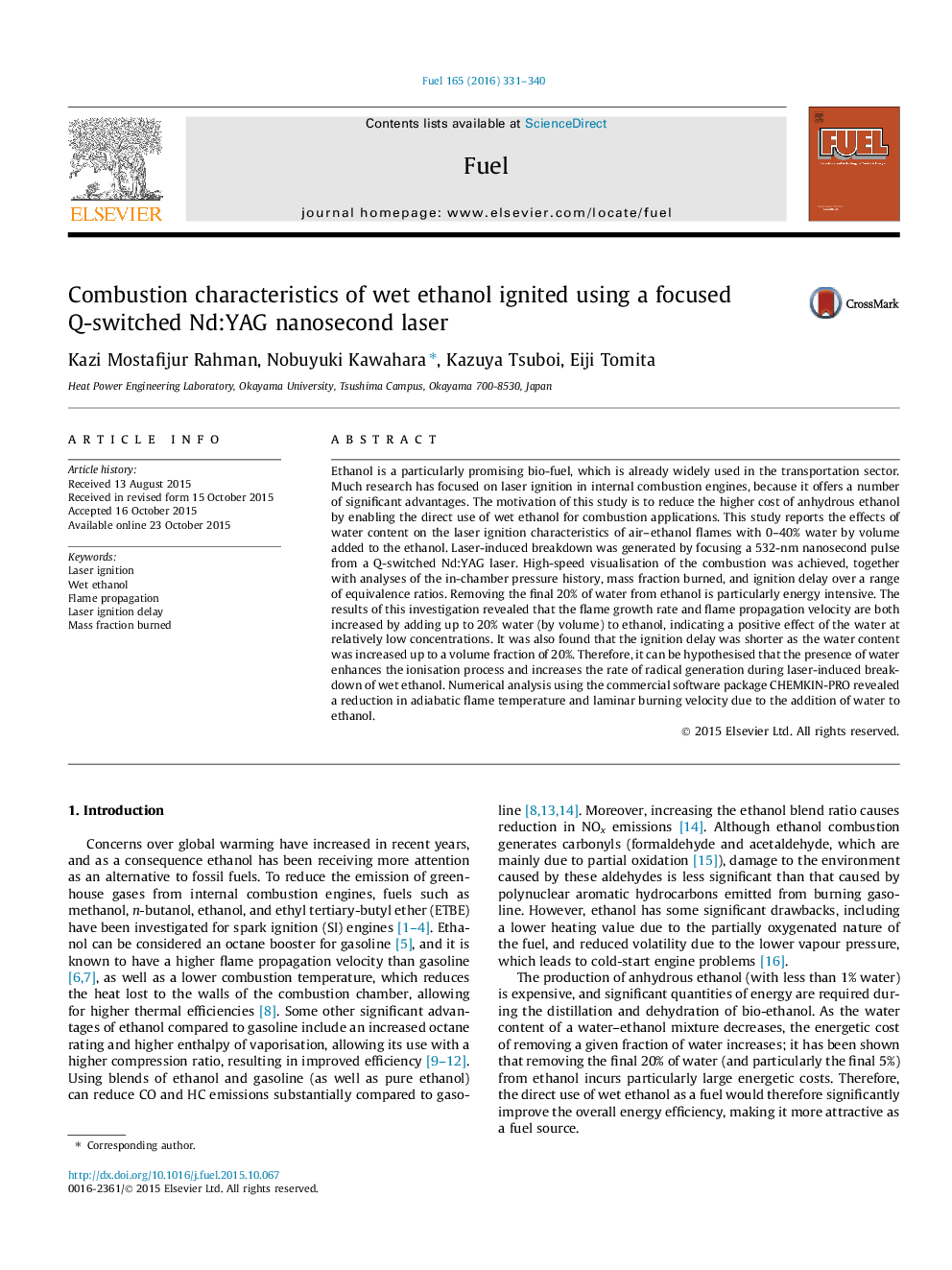| Article ID | Journal | Published Year | Pages | File Type |
|---|---|---|---|---|
| 6634265 | Fuel | 2016 | 10 Pages |
Abstract
Ethanol is a particularly promising bio-fuel, which is already widely used in the transportation sector. Much research has focused on laser ignition in internal combustion engines, because it offers a number of significant advantages. The motivation of this study is to reduce the higher cost of anhydrous ethanol by enabling the direct use of wet ethanol for combustion applications. This study reports the effects of water content on the laser ignition characteristics of air-ethanol flames with 0-40% water by volume added to the ethanol. Laser-induced breakdown was generated by focusing a 532-nm nanosecond pulse from a Q-switched Nd:YAG laser. High-speed visualisation of the combustion was achieved, together with analyses of the in-chamber pressure history, mass fraction burned, and ignition delay over a range of equivalence ratios. Removing the final 20% of water from ethanol is particularly energy intensive. The results of this investigation revealed that the flame growth rate and flame propagation velocity are both increased by adding up to 20% water (by volume) to ethanol, indicating a positive effect of the water at relatively low concentrations. It was also found that the ignition delay was shorter as the water content was increased up to a volume fraction of 20%. Therefore, it can be hypothesised that the presence of water enhances the ionisation process and increases the rate of radical generation during laser-induced breakdown of wet ethanol. Numerical analysis using the commercial software package CHEMKIN-PRO revealed a reduction in adiabatic flame temperature and laminar burning velocity due to the addition of water to ethanol.
Related Topics
Physical Sciences and Engineering
Chemical Engineering
Chemical Engineering (General)
Authors
Kazi Mostafijur Rahman, Nobuyuki Kawahara, Kazuya Tsuboi, Eiji Tomita,
